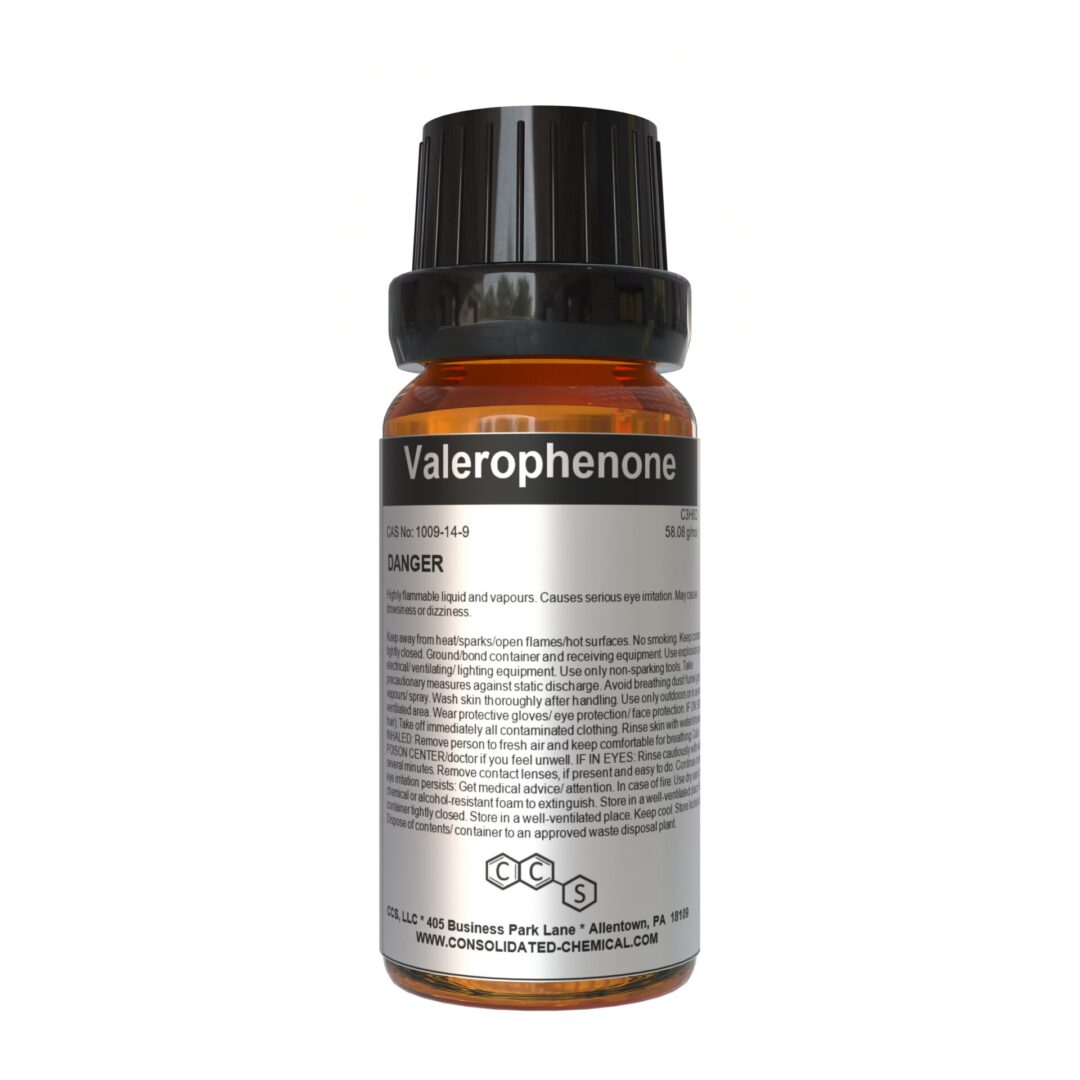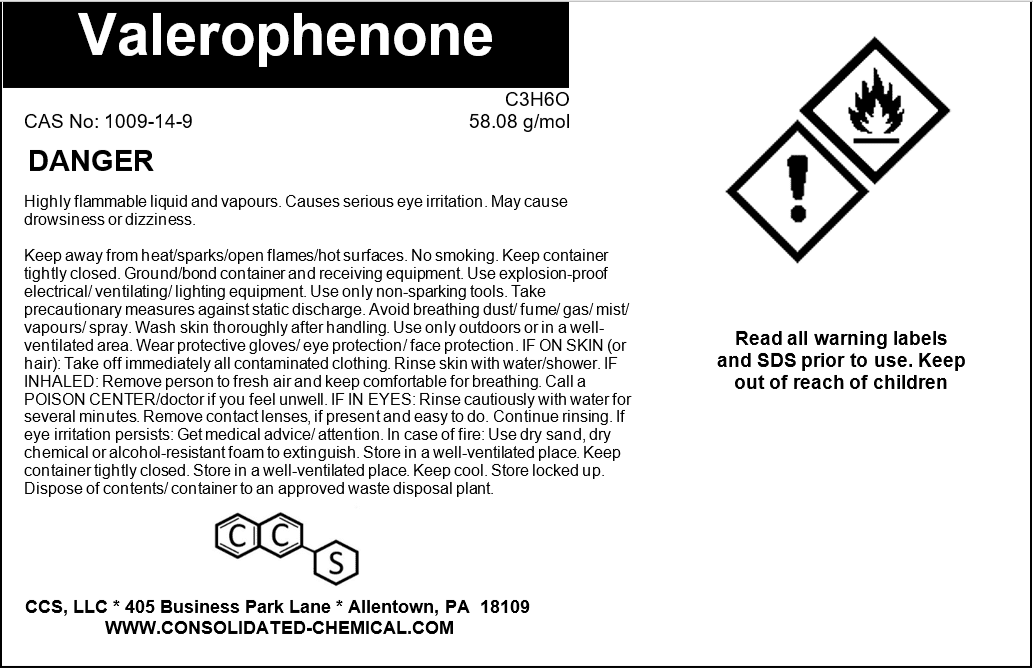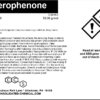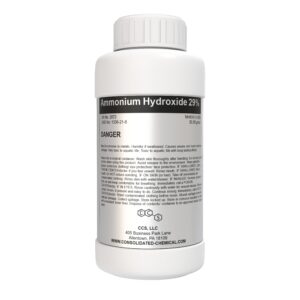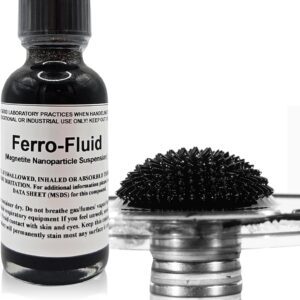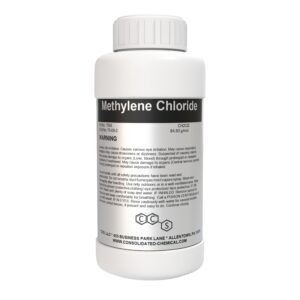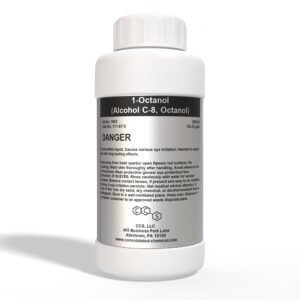Valerophenone – Premium-Grade Ketone
$35.00 – $55.00
General Information
- Chemical Name: Valerophenone
- Synonyms: 1-Phenyl-1-pentanone, Pentanophenone
- Molecular Formula: C₁₁H₁₄O
- CAS Number: 1009-14-9
- EC Number: 213-767-3
- Appearance: Clear to pale yellow liquid
- Odor: Faint aromatic odor
Physical and Chemical Properties
- Molecular Weight: 162.23 g/mol
- Boiling Point: 243–245°C (469–473°F)
- Melting Point: -9°C (15.8°F)
- Flash Point: 108°C (226°F) (closed cup)
- Density: 0.98–1.00 g/cm³ at 25°C
- Vapor Pressure: 0.03 mmHg at 25°C
- Refractive Index: 1.514–1.518 at 20°C
- Solubility:
- Water: Insoluble
- Soluble in organic solvents like ethanol, acetone, and ether
Purity and Quality
- Purity: ≥99%
- Grade: Industrial grade, laboratory grade
Description
Valerophenone, a versatile aromatic ketone, is widely used in chemical synthesis, photochemistry, and as an intermediate in various industrial processes. With its high purity and reliable performance, Valerophenone is an essential compound for researchers, chemists, and industrial professionals.
Applications of Valerophenone
Chemical Synthesis
- Pharmaceuticals:
- Used as an intermediate in the production of active pharmaceutical ingredients (APIs).
- Agrochemicals:
- Plays a role in synthesizing herbicides, fungicides, and insecticides.
- Specialty Chemicals:
- A precursor for manufacturing fine chemicals used in coatings, adhesives, and more.
Photochemistry
- Photosensitizer:
- Commonly used in photochemical studies to initiate and analyze light-induced reactions.
- Reactive Intermediates:
- Generates free radicals under UV light, making it useful in photophysical and photochemical experiments.
Industrial Applications
- Resins and Coatings:
- Used in the formulation of high-performance resins and specialty coatings.
- Plasticizers:
- An intermediate in creating plasticizers for enhancing the flexibility of polymers.
- Fragrances:
- Valerophenone derivatives are employed in the synthesis of aromatic compounds for fragrances.
Research and Development
- Laboratory Studies:
- Used in academic and industrial research for investigating reaction mechanisms and chemical properties.
- Catalyst Testing:
- Acts as a model compound in catalysis experiments.
Material Science
- Polymers:
- Involved in the development of new polymeric materials and composites.
- Additive Manufacturing:
- Utilized as a building block for creating specialty additives in manufacturing processes.
Analytical Applications
- Gas Chromatography Standards:
- Employed as a reference compound for calibration in chromatographic methods.
- Spectroscopy Studies:
- Used in UV-Vis and IR spectroscopy for studying chemical behavior and properties.
Education and Training
- Teaching Tool:
- Used in chemistry education to demonstrate organic synthesis, photochemical reactions, and ketone reactivity.
Storage Guidelines
- Storage Conditions:
- Store in a cool, dry, and well-ventilated area, away from direct sunlight, heat, and ignition sources.
- Ideal storage temperature: 15°C to 25°C (59°F to 77°F).
- Keep containers tightly sealed to avoid contamination and evaporation.
- Container Recommendations:
- Use containers made of glass or high-density polyethylene (HDPE) for safe storage.
- Ensure the container is properly labeled to avoid accidental misuse.
- Incompatibilities:
- Keep away from strong oxidizing agents, acids, and bases.
Handling Guidelines
- Personal Protective Equipment (PPE):
- Gloves: Wear nitrile or neoprene gloves to protect skin.
- Eye Protection: Use chemical splash goggles to avoid eye contact.
- Clothing: Wear a lab coat or apron to prevent skin exposure.
- Workplace Safety:
- Handle in a well-ventilated area or under a fume hood to minimize exposure to vapors.
- Avoid open flames or sparks, as Valerophenone is flammable.
- Precautionary Measures:
- Prevent inhalation of vapors or mist.
- Avoid prolonged or repeated skin contact.
- Wash hands thoroughly after handling.
Spill and Disposal Guidelines
- Spill Cleanup:
- Contain spills with inert materials such as sand, vermiculite, or absorbent pads.
- Dispose of collected material in accordance with local, state, and federal regulations.
- Disposal:
- Dispose of unused product and contaminated materials via licensed chemical waste disposal services.
Additional information
| Size | 30mL (1 Fl Oz), 60mL (2 Fl Oz) |
|---|
Related products
-

Ammonium Hydroxide 29% – High-Quality Aqueous Solution
$14.99 – $29.99 Select options This product has multiple variants. The options may be chosen on the product page -

Ferrofluid Magnetic Liquid
$12.00 – $290.00 Select options This product has multiple variants. The options may be chosen on the product page -

Methylene Chloride (Dichloromethane)
$28.00 – $135.00 Select options This product has multiple variants. The options may be chosen on the product page -

1-Octanol (Alcohol C-8) Premium Aroma Fragrance Compound
$12.00 – $95.00 Select options This product has multiple variants. The options may be chosen on the product page
SKU: N/A
Categories: Fragrance Chemical, Industrial Chemical
Tags: Affordable Valerophenone for Sale, Analytical Standard Valerophenone, Bulk Valerophenone Supplier, Buy Valerophenone Online, Eco-Friendly Valerophenone Packaging, Gas Chromatography Valerophenone, High-Purity Valerophenone, Industrial-Grade Valerophenone, Laboratory-Grade Valerophenone, Long Shelf-Life Valerophenone, Photochemical Studies Valerophenone, Premium Valerophenone, Research-Grade Valerophenone, Safe Packaging Valerophenone, Specialty Chemicals Valerophenone, Valerophenone, Valerophenone for Agrochemicals, Valerophenone for Catalyst Testing, Valerophenone for Chemical Synthesis, Valerophenone for Coatings, Valerophenone for Fragrances, Valerophenone for Pharmaceuticals, Valerophenone for Photochemistry, Valerophenone for Plasticizers, Valerophenone for Polymers, Valerophenone for Resins, Valerophenone for Spectroscopy, Valerophenone Intermediate, Valerophenone Photosensitizer


